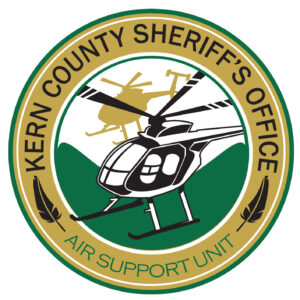Transfer Students
We’re honored that you’re considering California Aeronautical University as your next step towards a career in aviation.
Whether you’re transitioning from a community college, another university, or from the military, CAU offers a personalized pathway to help make transferring simple and seamless.
We are thrilled to welcome you to one of our campus locations, where your career journey will truly take off!
Who is Cleared for Transfer?
To be considered a transfer student when you apply to California Aeronautical University, you must have logged 12 or more academic units from a college or university and have graduated high school.
If you haven’t reached 12 academic units yet, you can still apply as a first-time freshman and provide us with your transcripts for credit evaluation.
Transfer Student Requirements
- High school diploma or GED
- 12 or more transferrable semester units
- Overall GPA of 2.0 or higher
- Completed a course in written communication
- Completed a course in mathematics or quantitative reasoning
Transfer Student Program Enrollment
Minimum Requirements for Admission
- CAU Application
- Must be at least 17 years of age
- High school diploma, GED, or equivalent
Transfer Student Requirements:
- College Transcript showing 12 completed and transferrable semester units (or 18 quarter units)
- Completed a course in written communication
- Completed a course in mathematics or quantitative reasoning
- Completion of each transferable course* with a 'C' or better
- Cumulative GPA of 2.0 or higher
- In good standing at the last college/university attended
Program-Specific Requirements
Flight Programs
- Medical clearance from an FAA-certified examiner
- Professional pilot students must be medically cleared to fly. Learn about disqualifying medical conditions and how to apply for your medical certificate here.
- Profile assessment
- Drug screen
- TSA Documentation
- U.S. Citizens
- Valid, unexpired U.S. passport and copy of birth certificate
- U.S. naturalization certificate (Form N-550 or Form N-570)
- Certification of birth abroad (Form FS-545 or DS-1350)
- Certificate of U.S. citizenship (Form N-560 or Form N-561)
- Non-U.S. Citizen Flight Students
- TSA Approval through AFSP
- U.S. Citizens
General Requirements For Graduate Studies
- Bachelor's degree in related field, from an accredited institution
- Two letters of reference
- Essay
*Transferable courses are those designated for baccalaureate credit by the college or university offering the courses and accepted as such by the university to which the applicant seeks admission.
California Aeronautical University starts a new term every 10 weeks. Contact our team to learn more about upcoming application deadlines.
Why California Aeronautical University?
As a CAU student, all transfers enrolled in the Bachelor of Science in Aeronautics program can take advantage of the fast-track benefits offered by California Aeronautical University.
5 Great Reasons to Choose Part 141 Flight Schools
If you are interested in becoming a pilot or working in the aviation industry, you’ll want to consider attending Part 141 flight schools – here is why. All flying schools are the same, right? Actually, no, not quite. If you want to become a pilot, choosing a quality flight school should feature high on your...
R-ATP Program
- 500 Hour Time-Savings
CAU is Part 141 approved, which means CAU has met strict federal regulations regarding its structured flight training curriculum, training facility, and flight instructors. Part 141 approval also provides benefits to students who earn a bachelor’s degree. Eligible CAU students can qualify for a restricted Airline Transport Pilot (R-ATP) certification and only need 1,000 hours for the flight hour requirement. Candidates without a bachelor’s degree typically need 1,500 hours for their ATP. That's a savings of 500 flight hours.
- Fly for Airlines at 21
By earning a bachelor’s degree from CAU, eligible students can qualify to fly for the airlines at only 21 years old. Without a degree, candidates must wait until they're 23 years old.
Aviation Career-Focused
- Networking
Through the University’s strong partnerships with airlines, influential aviation organizations, and leaders in the aviation community, CAU graduates become a part of a larger aviation network and reap the benefits of these relationships. Aviation employers frequently visit CAU campuses to discuss job opportunities at their organizations, providing invaluable networking opportunities to our students.
- Direct Path to Airlines
CAU has partnered directly with major and regional airlines to create opportunities for their graduates. Most partnerships provide a direct pathway into the airline’s cadet program and may also provide access to tuition reimbursement programs. Often, students may even receive conditional job offers before they graduate.
Alumni Spotlight

Flight School Guides
Choosing the Right Pilot Training Programs to Meet Your Aviation Goals
A simple internet search for “pilot training” can yield an enormous number of results. The sheer amount of possibilities can seem overwhelming, and student pilots who are new to aviation might not be sure as to what to look for in a pilot training programs. Smaller flight schools are available, along with large facilities, that...Continue reading→
4 Benefits of Flight Simulator Training When Learning to Fly
Flight simulator training is a valuable tool that students can utilize to build flight time, improve technique, and learn valuable lessons. Many student pilots are surprised to learn that they can add hours to their flight time without ever leaving the ground. Although it does not count as pilot in command time, flight simulator training...Continue reading→
How to Stand Out As a Great Flight School Candidate
If you are nervous about how to present yourself as a great flight school candidate, there is a lot you can do while preparing your application to put your best foot forward. Even if you have never so much as stepped foot on an airplane as a passenger, flight schools will still take your application...Continue reading→
Request Personalized Transfer Plan






